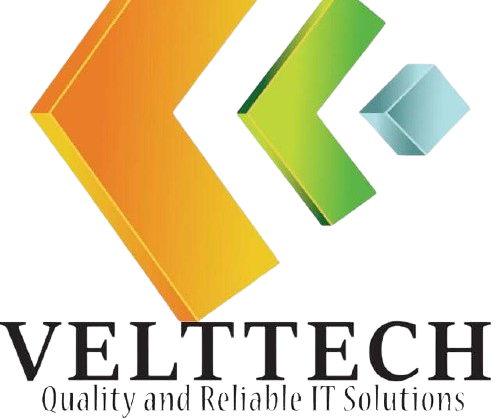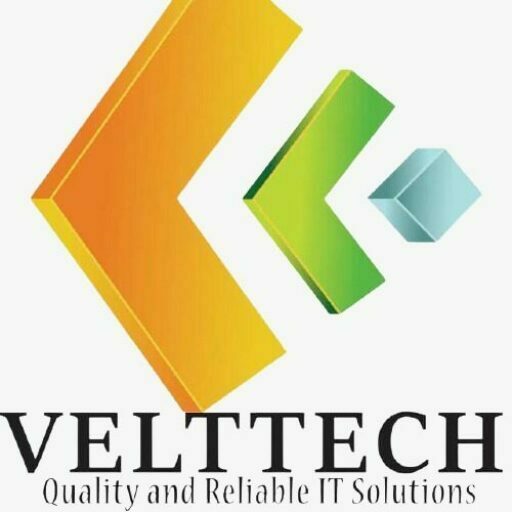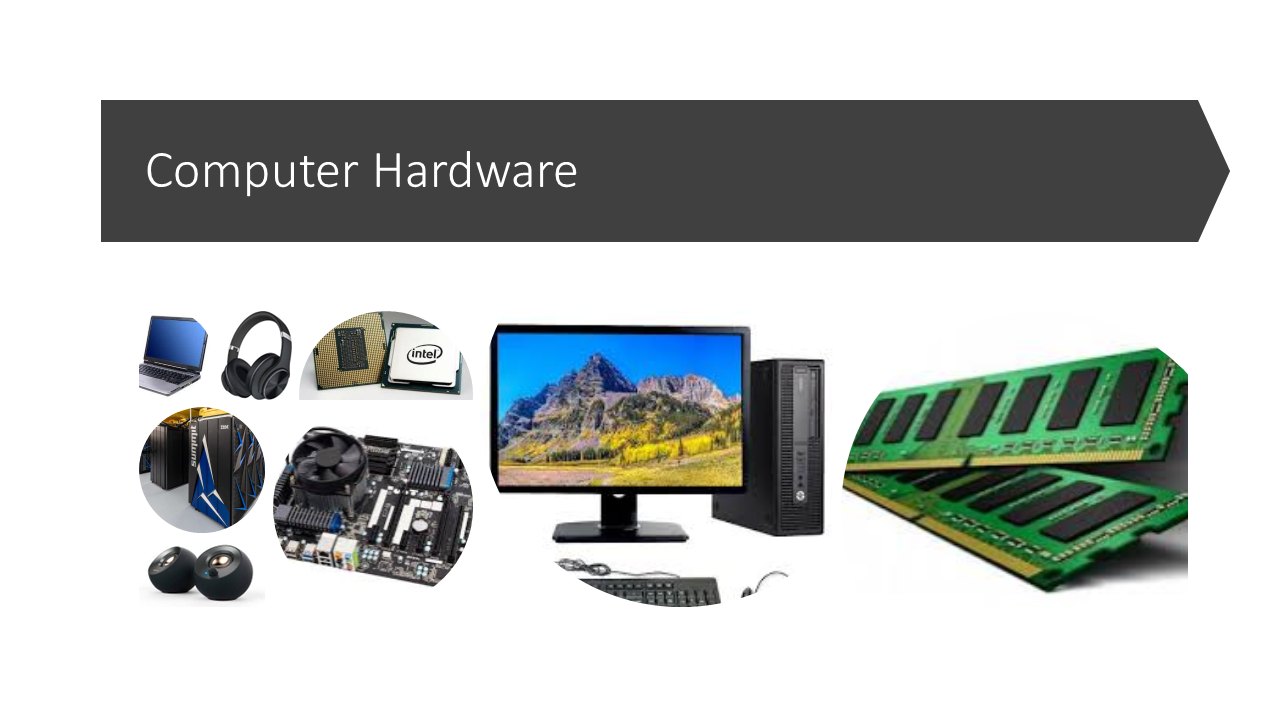The two main components of a personal computer are hardware and Software.
Introduction to Computer Hardware
Hardware is the physical part of the computer that may be seen and touched. The four main components of a personal computer are Monitor, Keyboard, System Unit, and Mouse
THE MONITOR OR VISUAL DISPLAY UNIT (VDU)
The monitor is an output device that displays information that the computer has processed. This information can be in the form of audio visual (video graphics), texts, images, and audio. The type of monitors includes cathode ray tube monitor and the liquid crystal display (LCD)
THE CATHODE RAY TUBE (CRT) MONITOR
This is the type of monitor that uses the cathode ray tube.
ADVANTAGES OF CRT MONITORS
1.They are relatively less expensive
2.They have good resolutions
DISADVANTAGES OF CRT MONITORS
1.They are big and can take up desktop space
2.They are difficult to move
3. CRTs require a lot of power to operate.
FLAT SCREEN MONITORS (LIQUID CRYSTAL DISPLAY)
These types of monitors are lighter and consume little power.
ADVANTAGES OF LCD
1.They are portable
2.They require less power to operate
3. They produce colours with better clarity can be displayed.
DISADVANTAGES OF LCD
1.They have a limited viewing angles
2.They are expensive relative to CRT monitors
Monochrome and Polychrome Monitors
Monochrome monitors are the type of monitors that display output in only one colour. Eg. White image or text on a black background. Polychrome monitors are monitors that display their output with multiple colours. These are the most common type of monitors in use these days
The Components of The System Unit
A system unit is the cabinet that keeps the electrical components that makes up the computer system.
These electrical components include the power supply unit (PSU) mother board, floppy disk drive, sound card, video card, hard dis drive etc. The system unit consists of internal and external components.
(A)THE EXTERNAL COMPONENTS.
These are components found outside the system unit. They include case, serial ports, power button, and indicator lights
(B)THE INTERIAL COMPONENTS OF THE SYSTEM UNIT.
These are components found inside the system. They include motherboard, hard disk, processor, memory, sound card, video card etc.
THE MOTHERBOARD
The motherboard is the main circuit board inside the system unit to which all other components are attached either physically or wirelessly.
THINGS TO CONSIDER WHEN CHOOSING A MOTHERBOARD.
*The motherboard chipset
*Expansion slots and connectors
*On board VGA, audio, modem, or network card.
The Central Processing Unit (CPU)
The CPU (Central Processing Unit) or the processor is the central processing unit of the computer.
The CPU serves as the brain of the computer. The function of the processor is to convert raw data into meaningful information and also help control the operations of other components of the computer. The CPU works following specific instructions (from software). The speed of a processor is measured in HERTZ. The speed of the CPU determines the processing power of a processor.
The most common brands of processors are Intel, AMD, and Motorola processors. The main function of the processors is to perform arithmetic and logical operations. The CPU consists of the Control Unit, the Arithmetic Logic Unit (ALU), Registers, and Clock.
The Functions of the Control Unit (CU) of the Processor
The control unit interprets the instructions stored in programs or software and prioritize them for execution in the most efficient order.
It determines what work needs to be done and then directs the appropriate components of the computer to do it. It controls the input devices, memory unit, ALU, storage unit, and output devices.
FUNCTIONS OF ALU
It performs the logic and arithmetic operation on data.
It may store data in temporary memory locations called registers where it may be received quickly
The Memory of a Computer
Computer memory refers to the component that stores data or programs on a temporary or permanent basis for use in a computer.
FUNCTIONS OF MEMORY
*The memory stores the program or instructions to be executed.
*It stores the operating systems of the computer and data that are being processed. The most common type of memory includes Random Access Memory (RAM), Random Only Memory (ROM), and Complementary Metal-Oxide Semiconductor (CMOS).
RAM (Random Access Memory)
Random Access Memory (RAM) is the type of computer memory that temporarily stores data and instructions to be processed by the central processing unit (CPU). It serves as the “work bench” for the processor.
RAM is a volatile memory. A volatile memory is defined as a type of memory that losses data as soon as power is lost. Meaning that volatile memories do not have permanent memory spaces hence clears every data and instruction when power is lost.
The two basic RAM are Dynamic RAM (DRAM) and Static RAM(SRAM)
The types of ROM are
- PROM (Programmable Read Only Memory)
- EPROM (Erasable Programmable Read Only Memory)
- EEPROM (Electrically Erasable Programmable ROM)
Difference Between Random Access Memory (RAM) and Read Only Memory (ROM)
| Random Access Memory (RAM) | Read Only Memory (ROM) |
|---|---|
| RAM has a temporary memory. It stores data temporarily. | ROM has permanent memory. Thus, data is permanently stored |
| It stores data and instructions from running applications. | It stores instruction or data from the manufacturer |
| RAM is volatile | ROM is non-volatile |
| Users can alter the content of RAM | Users can not easily alter the content of ROM |
| RAM is relative expensive | ROM is not expensive |
Read the NOTES ON INTRODUCTION TO COMPUTERS



No responses yet